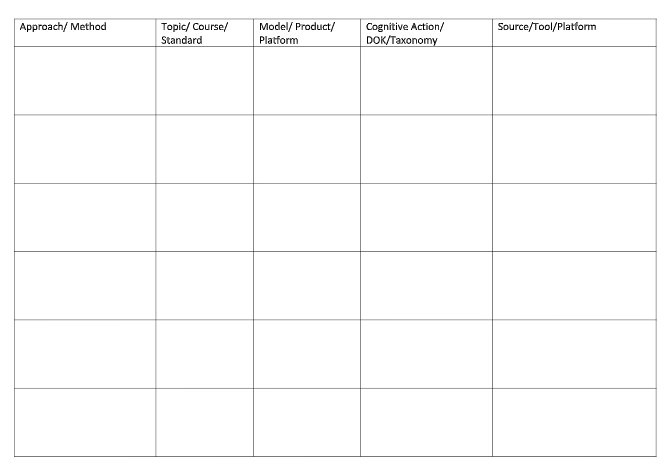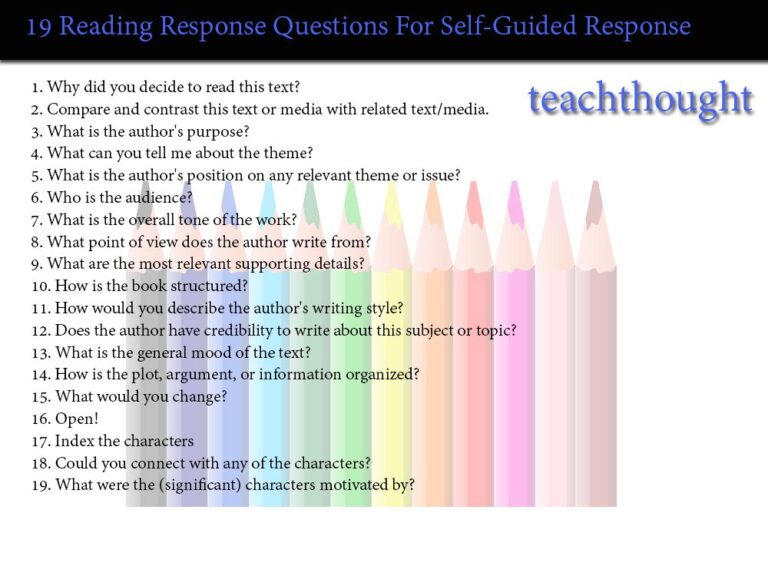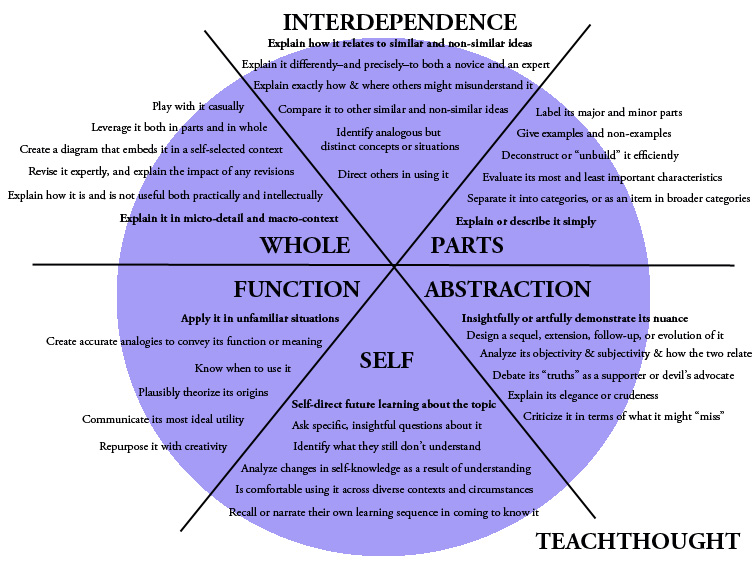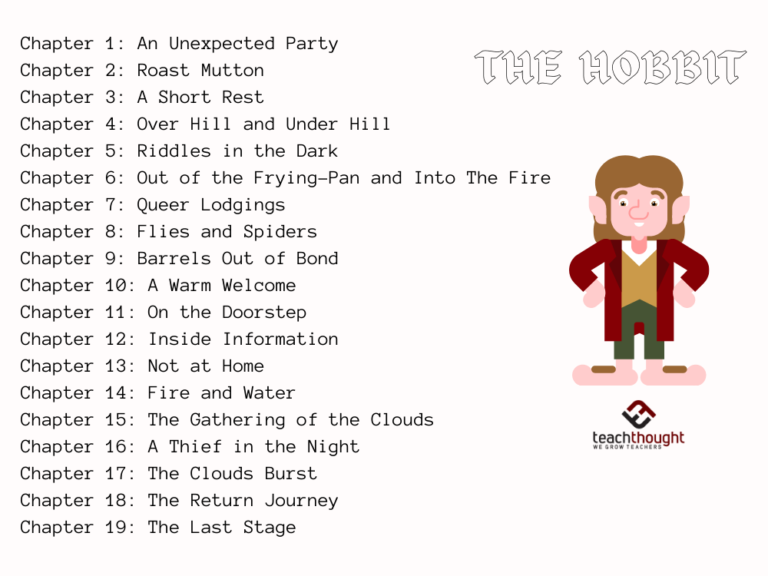



Students needed to see what a ‘quality’ reading response looked like. Once these questions were demystified a bit, it was all downhill.
50 Activities To Promote Digital Media Literacy In Students Infer the author’s purpose. Distinguish between primary and secondary audiences. Summarize the media by identifying its 3-5 most important ideas or events. Identify and diagram the literary elements (e.g., setting, characters, conflict, etc.) Identify and analyze characters as major or minor; flat or round; static or…

Literary Terms and Devices Allegory A symbolic narrative in which the surface details imply a secondary meaning. Allegory often takes the form of a story in which the characters represent moral qualities. The most famous example in English is John Bunyan’s Pilgrim’s Progress, in which the name of the central character, Pilgrim, epitomizes the book’s…

The Hobbit is about Bilbo’s maturation from a ‘do-nothing’ to a courageous adventurer who risks everything for the benefit of others.